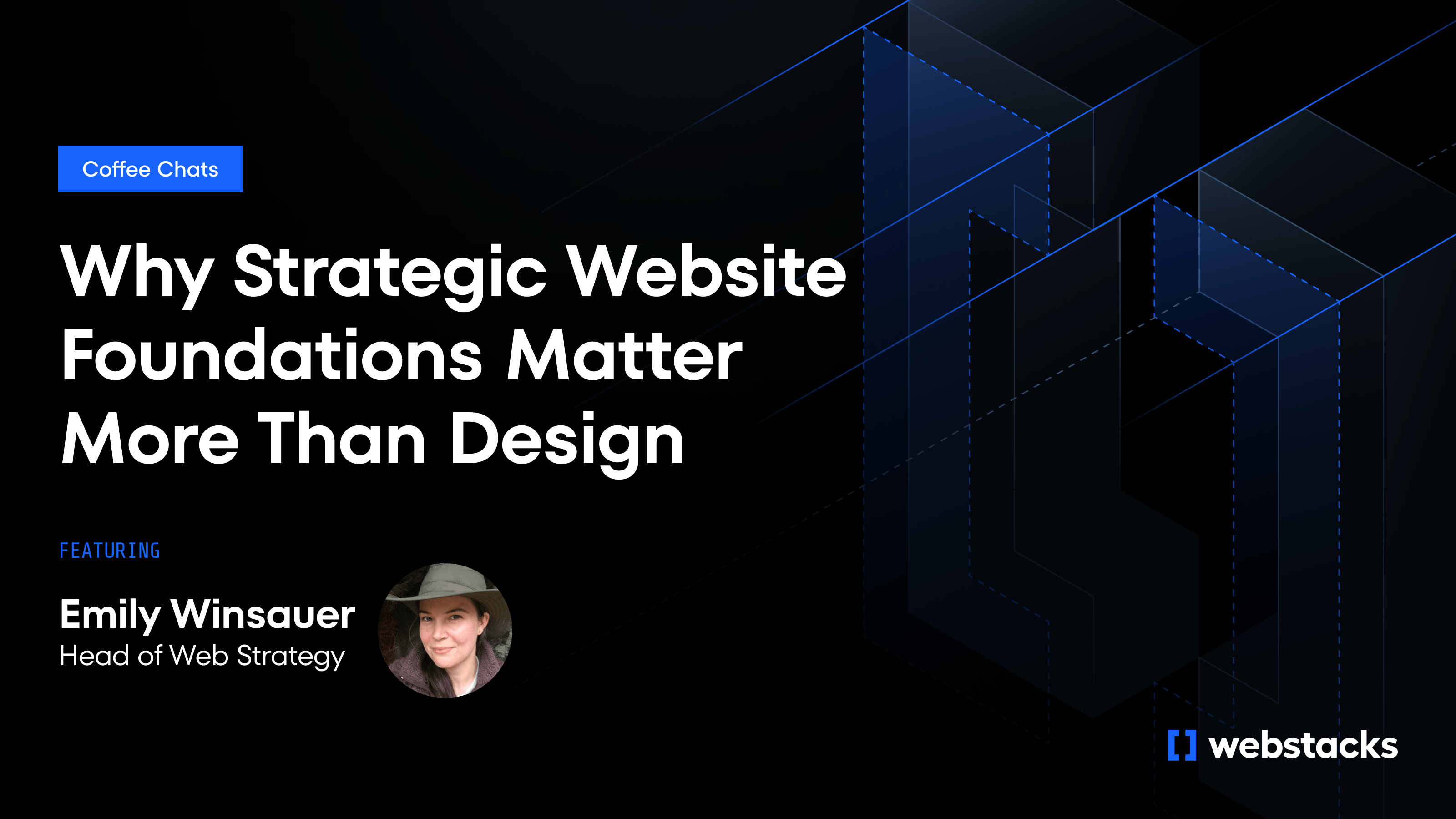Your brand is more than just your logo. It's the total impression people have of your startup. A strong startup brand strategy connects with your audience, reflects your values, and helps you carve out your unique position in the market.
Startups with brand strategies find it easier to attract investors, and grow sustainably in crowded markets. When you invest in branding early, you'll stand out from competitors and establish credibility faster.

1. Define Your Brand Purpose and Mission
Your brand purpose is the underlying "why" of your organization and the reason it exists beyond profit.
The mission transforms that purpose into the "what", and defines what your brand stands for and its impact.
As a founder, you need to articulate a concise mission statement and develop a "Big Hairy Audacious Goal" (BHAG) that is ambitious, memorable, and integrated into both your internal culture and external communication. These elements will guide your startup brand strategy, inspire your employees, and differentiate your brand in the market.
Clarify the 'Why' in Your Startup Brand Strategy
Dig deep to uncover your brand's true purpose. Gather key team members for a workshop and ask:
- Why did we start this company?
- What impact do we want to have on the world?
- What would be lost if our company didn't exist?
These questions help distill your purpose into something clear and compelling that speaks to both your team and audience.
Align with Stakeholders
Your public claims must match your actual behavior—no "say-do gap" allowed. This authentic alignment builds trust with everyone involved in your business.
Take Patagonia's purpose: "We're in business to save our home planet." This simple statement drives everything they do, from product development to marketing to environmental initiatives.
Example: SaaS Startup Empowering Small Businesses
Picture a SaaS startup with this mission: "To empower small businesses with enterprise-level tools at affordable prices." This resonates with small business owners who struggle to access powerful software.
By aligning product development, pricing, and customer support with this mission, they build a loyal customer base. Their customers feel they're not just buying software but partnering with a company that genuinely understands their challenges.
This clear purpose guides every decision, from feature priorities to marketing messages.
2. Identify and Understand Your Target Audience
As a startup founder, you need to identify and understand your target audience.
Break down your potential market into clear segments:
- Demographic analysis: Consider factors like age, gender, location, and income.
- Psychographic segmentation: Examine lifestyles, values, and interests.
- Behavior analysis: Look at purchasing patterns and product usage.
Use tools like Google Analytics to see how visitors interact with your website. Website personalization can further improve user engagement by delivering tailored content to different audience segments.
Develop Buyer Personas
Create detailed portraits of your ideal customers by combining all your data. These personas help you visualize who you're really talking to.
To build accurate personas:
- Run surveys for quantitative data.
- Host focus groups for deeper discussions.
- Conduct one-on-one interviews with potential customers.
This direct feedback gives you priceless insights into what your audience needs, wants, and struggles with.
Example: Fintech Startup
Picture a fintech startup developing financial services for underserved markets. Their research identifies freelancers and small business owners as key segments.
Through surveys and interviews, they discover these groups struggle with irregular income, complex taxes, and limited access to traditional banking.
With this knowledge, they create targeted solutions like a savings app that automatically sets aside tax money, business loans with repayment terms that flex with income fluctuations, and digital banking designed specifically for freelancers.
3. Develop a Unique Value Proposition (UVP)
A unique value proposition (UVP) articulates why customers should choose your product or service over competitors. A UVP typically includes problem identification, solution overview, benefit statement, and differentiator.
To create a UVP, you must identify the distinctive qualities that make your startup's solution superior to alternatives. Start by analyzing your competitors and finding gaps or opportunities to differentiate. Ask yourself:
- What makes your startup stand out?
- Why is your solution superior?
- What unparalleled value can you deliver?
By answering these questions, you'll uncover your unique selling points and be better equipped to communicate them to your target audience.
Communicate Benefits
Focus on customer benefits, not product features. Features describe what your product does; benefits show how it improves customers' lives or solves their problems. Frame your UVP by answering:
- What specific problem does your startup solve?
- How does your solution make customers' lives easier?
This approach connects with your audience's needs instead of getting lost in technical details.
You can incorporate your UVP into your landing pages to boost your conversions.
Example: Healthtech Startup
A healthtech startup creating AI-driven diagnostic tools might use this UVP:
"Our AI-powered diagnostics deliver results in minutes, not days, with 99% accuracy. Doctors can make faster and more informed decisions, leading to better patient outcomes and reduced healthcare costs."
This clearly shows the tangible benefits: time saved, improved accuracy, and better patient care.
When developing your UVP, avoid these common mistakes:
- Being too generic.
- Overcomplicating the message.
- Focusing only on features.
- Making unsubstantiated claims.
Learn more: Healthcare Website Redesign (Best Practices & HIPAA Compliance Guide)
4. Craft Your Brand Identity
Your brand identity is the total representation of your company's visual style, messaging, tone of voice, and the overall perception customers develop at every touchpoint.
Visual Identity
Creating a strong visual identity is important for startups looking to make a lasting impression. This includes:
- Logo: A distinctive, memorable symbol that represents your brand.
- Color scheme: A carefully chosen palette that evokes the right emotions and associations.
- Typography: Fonts that reflect your brand's personality and ensure readability.
- Iconography: Unique visual elements that support your brand's style.
Verbal Identity
Your brand's voice is just as important as its visual elements. Developing a consistent tone of voice and messaging guidelines helps your brand communicate effectively and authentically across all channels. This includes:
- Brand personality: The human characteristics attributed to your brand.
- Tone of voice: The way your brand speaks to its audience.
- Key messages: The core ideas you want to convey about your brand.
To maintain consistency, create detailed brand guidelines (style guides) that cover: logo usage rules, color codes and applications, typography specifications, imagery guidelines, and tone of voice examples.
Example: Cybersecurity Startup
Imagine a cybersecurity startup working to establish trust and expertise in a competitive market.
Their branding might include a bold, angular logo design suggesting strength and protection, a color scheme of deep blue (trust) and silver (technology), clean typography for readability and professionalism, and iconography featuring shield and lock motifs.
Their verbal identity would embrace an authoritative and reassuring tone of voice, clear, jargon-free language to explain complex concepts, and key messages emphasizing reliability and customer protection.
For startups looking to scale fast with consistent branding across all digital touchpoints, working with a web development and design agency like Webstacks ensures your brand identity is beautifully designed and built to perform across channels and devices.

5. Build a Compelling Brand Story
A compelling brand story is the narrative that connects your startup's purpose, mission, vision, and values. A powerful story transforms dry mission statements into engaging narratives.
Narrative Development
When developing your brand story, focus on creating a narrative that captures your startup's journey, challenges, and triumphs. Include these key elements:
- Origin story: Why was your company founded?
- Problem identification: What issue are you solving?
- Vision for the future: How will your solution make a difference?
Make your story authentic, relatable, and aligned with your brand's purpose. Focus on the genuine passion and motivation behind your startup rather than exaggerations.
Emotional Connection
Brand storytelling creates deeper connections with your audience by appealing to their values and aspirations. When you communicate emotionally, you turn your mission into content that people genuinely care about.
Consider Airbnb's mission: "To create a world where anyone can belong anywhere." This simple statement conveys a powerful emotional message that resonates with travelers seeking authentic experiences.
Example: Renewable Energy Startup
Consider a renewable energy startup founded by engineers who witnessed firsthand the environmental devastation caused by traditional energy sources. Their personal experiences drove them to create sustainable alternatives.
Their brand story might go something like this:
"Growing up in a coal mining town, we saw the toll that fossil fuels took on our community's health and environment. Determined to make a difference, we founded GreenPower to harness the untapped potential of wind and solar energy. Our vision is a world where clean, renewable energy is accessible to all, powering homes and businesses without compromising our planet's future."
This narrative resonates with eco-conscious consumers who want to support businesses aligned with their values.
6. Implement Your Startup Brand Strategy Across All Touchpoints
Once you've developed your startup brand strategy, you need to implement it across all touchpoints.
Think about every platform where customers interact with your business: website, social media profiles, product packaging, email communications, marketing materials, signage, and customer support interactions.
Be mindful of common service page design mistakes that can undermine your brand consistency and confuse customers.
To manage and distribute up-to-date brand assets, consider using a digital asset management (DAM) system.
Still, implementing your startup brand strategy across every touchpoint can be overwhelming. That’s why many high-growth startups turn to Webstacks for integrated design and development that keeps everything on-brand and on-strategy.
Employee Advocacy
Internal alignment is just as important as external consistency. Train all team members to understand and embody your brand values.
Consider standardizing your onboarding process with training modules focused on brand identity, customer communication, core values and mission.
7. Monitor and Evolve Your Startup Brand Strategy
A brand strategy isn't static. As your startup grows and market conditions shift, your brand must adapt.
To track the effectiveness of your brand strategy, monitor key performance indicators (KPIs) that reflect brand health and impact. Some important metrics to consider include:
- Customer loyalty: Track repeat purchases and customer retention rates.
- Net Promoter Score (NPS): Gauge customer satisfaction and likelihood to recommend your brand.
- Social media engagement: Monitor likes, shares, comments, and overall interaction with your brand content.
- Conversion rates: Analyze how effectively your brand messaging drives desired actions.
Gathering and acting on customer feedback is also important for brand evolution. Set up feedback loops through:
- Customer surveys: Regularly collect structured feedback on brand perception and experience.
- Social listening: Monitor social media platforms for mentions, sentiment, and discussions about your brand.
- Reviews and ratings: Analyze customer reviews on various platforms to understand strengths and areas for improvement.
- Direct conversations: Talk one-on-one with customers to gain deeper insights.
Review and potentially adjust your brand strategy when launching new products or services, entering new markets, facing new competitive challenges, and implementing significant business model changes.
Example: Mobile App Startup
Consider a mobile app startup that's been in the market for six months. Through app store reviews, in-app feedback mechanisms, and usage analytics, the team discovers users are consistently confused about the app's core purpose.
To address this, the startup analyzes feedback patterns to pinpoint specific areas of confusion. They conduct user interviews to gain insights into expectations and pain points.
Based on what they learn, they refine their value proposition to match user feedback and market positioning. They redesign the app's onboarding experience to clearly communicate the brand promise and key features. Additionally, they update App Store and Google Play descriptions to better align with user expectations.
Take the Next Step to Building Your Startup Brand Strategy
A brand strategy is necessary for startups that want to stand out, build credibility, and grow quickly.
The most successful startups treat their brand as a strategic asset that grows alongside their business. To get started, assess your current branding and identify any gaps or inconsistencies. Consider practical next steps such as holding a brand workshop with stakeholders, developing or refining your brand guidelines, or conducting in-depth audience research.
By investing in your brand today, you're laying the foundation for a more resilient, recognizable, and successful business tomorrow.




